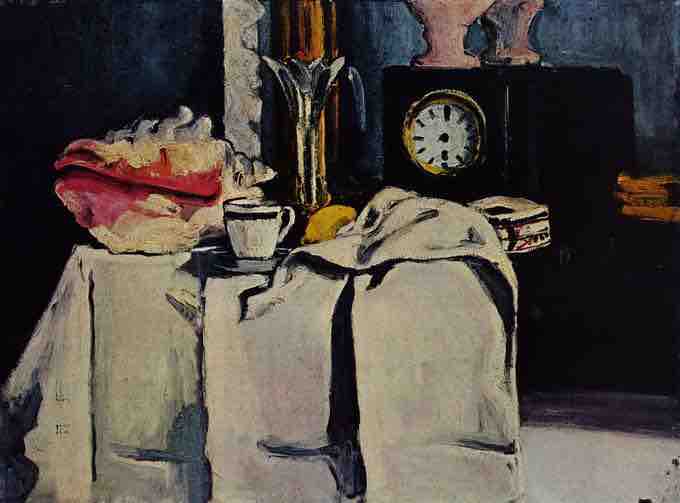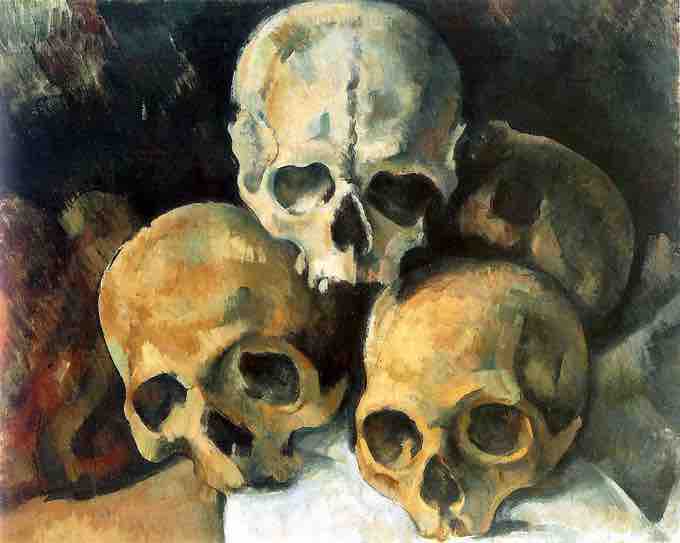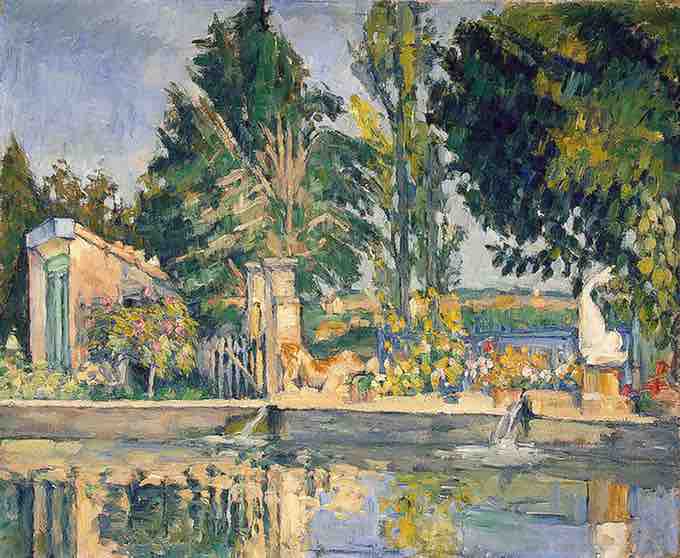Introduction
Paul Cézanne (1839–1906) was a French artist and Post-Impressionism painter whose work began the transition from the 19th-century conception of artistic endeavor to a new and radically different world of art. Cézanne's often repetitive brushstrokes are highly characteristic and clearly recognizable. He used planes of color and small brushstrokes to form complex fields and convey intense study of his subjects.
Early Work
Cézanne's early work is often concerned with the figure in the landscape, often depicting groups of large, heavy figures. Later, he became more interested in working from direct observation, gradually developing a light, airy painting style. Nevertheless, in Cézanne's mature work, there is development of a solidified, almost architectural style of painting. To this end, he structurally ordered whatever he perceived into simple forms and color planes.
Cézanne was interested in the simplification of naturally occurring forms to their geometric essentials, wanting to "treat nature by the cylinder, the sphere, the cone." For example, a tree trunk may be conceived of as a cylinder and an apple or orange as a sphere. Additionally, his desire to capture the truth of perception led him to explore binocular graphic vision. This exploration rendered slightly different, yet simultaneous, visual perceptions of the same phenomena, providing the viewer with a different aesthetic experience of depth.
Dark Period
Cezanne's "Dark Period" in 1861-1870, is comprised of works that are characterized by dark colors and the heavy use of black. They differ sharply from his earlier watercolors and sketches at the École Spéciale de dessin at Aix-en-Provence in 1859. In 1866–67, inspired by the example of Courbet, Cézanne painted a series of paintings with a palette knife. He later called these works, mostly portraits, une couillarde (a coarse word for ostentatious virility). All in all, works of the dark period include several erotic or violent subjects.

The Black Marble Clock 1869–1871
The Black Marble Clock, with it's heavy use of black and dark colors, exemplifies the type of work Cezanne created during his "Dark Period" in his early career.
After the start of the Franco-Prussian War in July 1870, Cézanne's canvases grew much brighter and reflective of Impressionism. Cézanne moved between Paris and Provence, exhibiting in the first (1874) and third Impressionist shows (1877). In 1875, he attracted the attention of collector Victor Chocquet, whose commissions provided some financial relief. On the whole, however, Cézanne's exhibited paintings attracted hilarity, outrage and sarcasm. The lightness of his Impressionist works contrast sharply with his dramatic resignation in his final period of productivity from 1898-1905. This resignation informs several still life paintings that depict skulls as their subject .

Pyramid of Skulls
Pyramid of Skulls, c. 1901, The dramatic resignation to death informs several still life paintings Cézanne made between 1898 and 1905.

Jas de Bouffan, 1876.
Under Pissarro's influence, Cezanne's works became much brighter and Impressionist in style.
Cézanne's explorations of geometric simplification and optical phenomena inspired Picasso, Braque, Gris and others to experiment with ever more complex multiple views of the same subject. Cézanne thus sparked one of the most revolutionary areas of artistic enquiry of the 20th century, one which was to affect the development of modern art. A prize for special achievement in the arts was created in his memory. The "Cézanne medal" is granted by the French city of Aix en Provence.